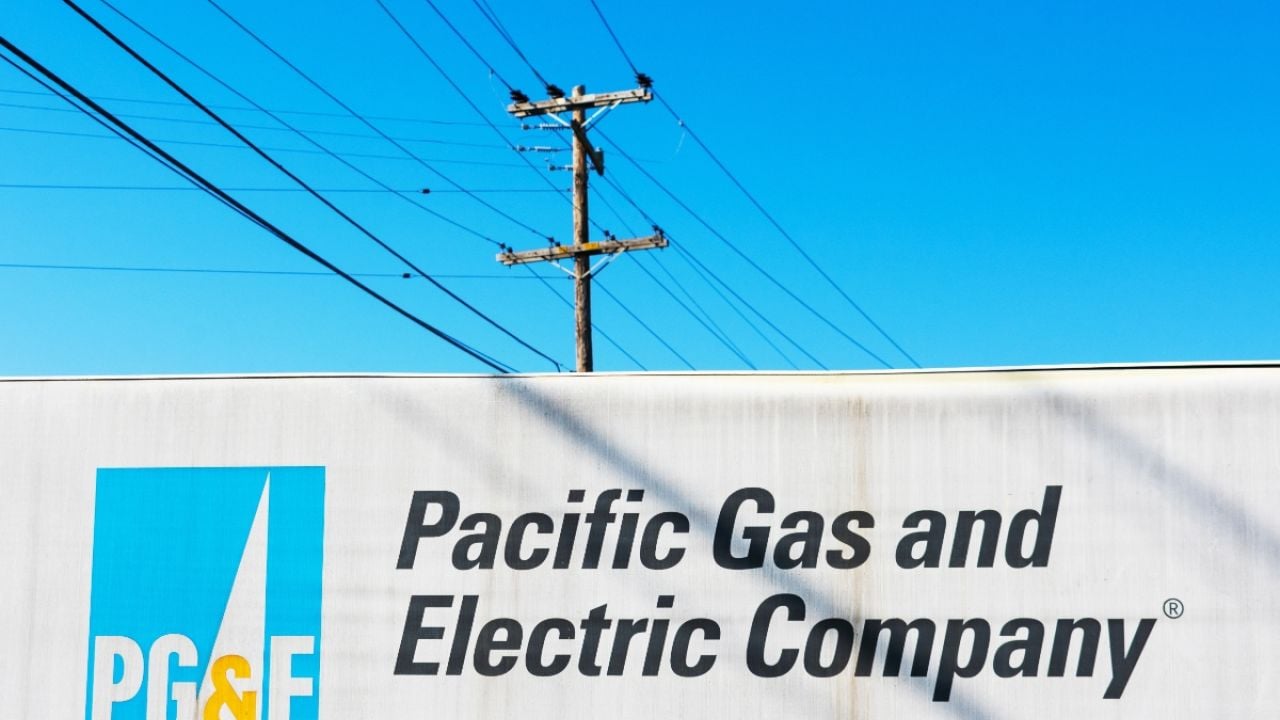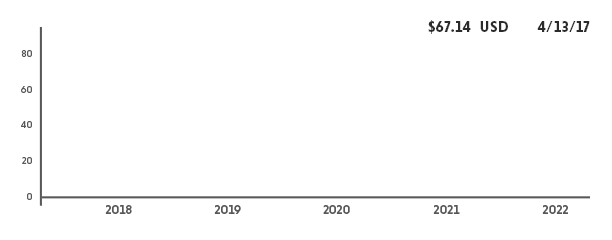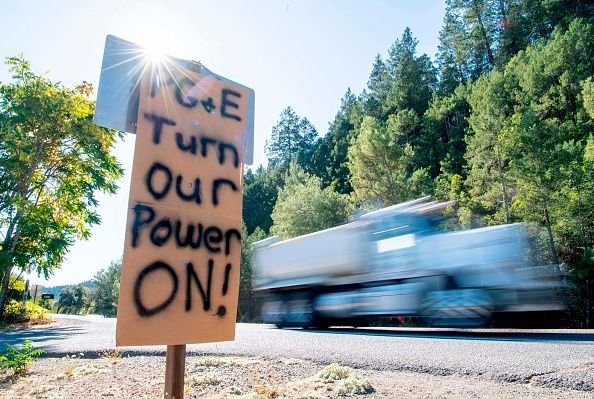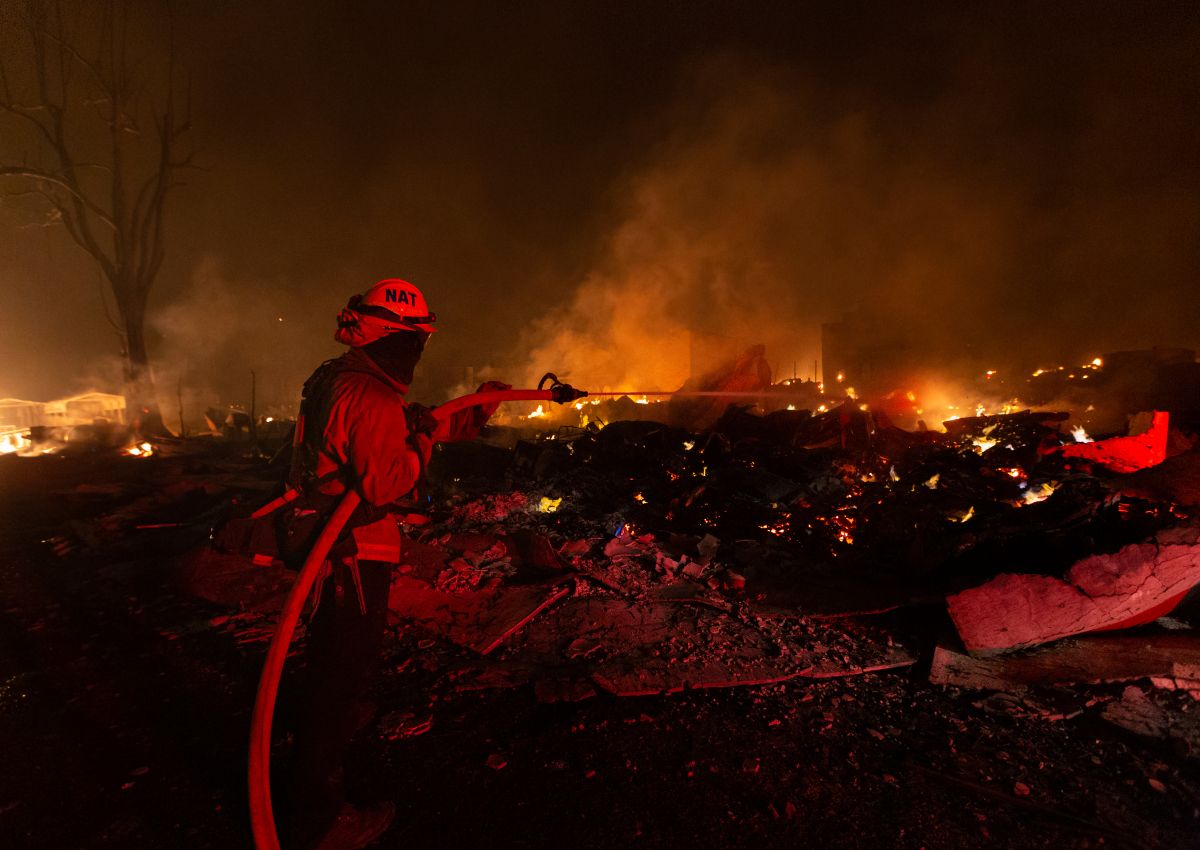
EWG presents this exclusive four-part series on Pacific Gas & Electric, or PG&E, the largest utility company in California, with a history of mismanagement and putting profits over consumers. The series shows how PG&E is the poster child for the financial, environmental and policy flaws in energy monopolies, and is a call for for a cheaper, more equitable energy future.
Whether it’s paying for wildfire safety or padding the profits of PG&E’s shareholders, California ratepayers are on the hook for billions of dollars of unfair bailouts for the utility.
Last year alone, since June, the investor-owned utility has requested more than $5.3 billion from the state via its customers. To put it into perspective, that’s $2 billion more than Gov. Gavin Newsom proposed for the state’s Environmental Protection Agency for 2020 and 2021.
And there are few, if any, benefits for the people who have no choice but to get their power from PG&E because of its monopoly over providing energy to millions of Californians.
In the first two installments in this series, EWG detailed how the utility secured its stranglehold on much of the state’s energy supply, and how it uses that monopoly control to prioritize profits over ratepayers.
PG&E’s approach hinders the advancement of clean energy like solar and power storage, which would not only slash customers’ bills but also help finally tackle the climate emergency.
EWG has a detailed plan for overhauling PG&E to make it a decentralized power system, and we’ll outline that in next week’s fourth and final part of this series. But it’s important to first explain just how ill-advised the utility’s financial plans are, because it will help to further underscore the major economic benefits of our alternative approach.
And you don’t have to be a CPA to know PG&E’s numbers just don’t make sense. The utility makes numerous planning mistakes, such as causing wildfires because of badly maintained transmission lines, or focusing on maintcentralized power generation like expensive natural gas plant investments1 when cheaper alternatives are available. Those decisions create billions of dollars in costs, which the company then shifts to customers.
More money, same problems
In August, PG&E petitioned California’s Public Utilities Commission, or CPUC, to allow a hike to 11 percent return on equity that would secure $201.3 million in extra profit for the company and its shareholders when California utilities already earn among the highest profit margins in the country.2 But how will the utility’s customers benefit?
They won’t. Instead, the company’s board of directors – who already enjoy large retainers and major stockholding benefits – and shareholders will likely reap most of the gains.
PG&E executives say the Covid-19 pandemic is partly to blame for the company stock’s recent poor performance, and that’s why the $200 million-plus is needed. “[W]hile major stock indices have surged upward over the last 16 months, including a 37 percent rise in the S&P 500 index – an overall rise in the average public company’s valuation that is consistent with falling interest rates and with the expected relationship between the costs of debt and equity – the index of utility stocks has increased only 1 percent over this period, and PG&E’s stock price has declined,” says the petition to the CPUC.
But blaming the pandemic is a poor excuse. PG&E’s stock has suffered for years, falling from $70, in September 2017, down to about $11 in early 2022.
Five-year PG&E market progression, as of April 13, 2022

Screengrab: Google Finance
PG&E struck a deal with Newsom, vowing it would no longer pay dividends until it reached at least $6.2 billion in annual earnings. The deal was the result of yet another state bailout of the company. That followed its 2019 bankruptcy, the result of its poor planning, liability for wildfires and more.
The $201.3 million proposal is designed to help PG&E meet its earnings goal in the deal with the governor, and it would let dividends to start to flow to shareholders once again. But it would come without any strings attached, so the utility wouldn’t have to change anything about its misguided approach to centralized power.
PG&E keeps asking for more of Californians’ money
In September, PG&E went back to the CPUC with another laughable petition, which seeks exactly $1.47 billion3 it would use to recover costs associated with the company’s efforts to mitigate wildfires and other catastrophes it caused between 2015 and 2020.
“Faced with the complex wildfire threat our state faces, PG&E is taking action to build a more climate-resilient energy network,” PG&E spokesperson Lynsey Paulo told the Mercury News.4
If the CPUC approves both the $201.3 million petition and the request for $1.47 billion, ratepayers would see their monthly bills increase by $9.43 per month, or about $113 annually, the newspaper reports.
If a child does something bad at school, they get detention. If PG&E throws money away on bad investments, the company knows it doesn’t have to fear any punishment…
But the company has not offered concrete plans for how it intends to build a grid that’s resilient to the climate crisis. The only solution is shifting to decentralized power, which removes the need for spending millions of dollars on transmission lines that can catch fire.
But PG&E continues to prioritize its centralized business model, and the two petitions are just the latest egregious examples of that defective approach to energy planning. It’s hard not to see the utility as treating California and the company’s customers as effectively a piggy bank they can keep raiding without consequence.
That’s why the utility in July asked state officials to approve a $3.6 billion5 hike in power rates, claiming it needed the money to harden its energy systems against wildfire threats.
Adding up the two petitions plus the July money grab, that’s about $5.3 billion PG&E is asking the state to hand it without a commit to any changes in how it operates. A state law known as AB 1054 ties executive compensation to wildfire safety and grid hardening in its wildfire safety certification plans,6 the result of which for PG&, to double down on the centralized utility business model.
Sign in Calistoga, Calif., in October 2019 calling on PG&E to turn the power back on

Photo: Josh Edelson via Getty Images
Achieving affordability should be a priority
PG&E knows how to pad its profits, but the utility shows a disdain for its customer base by making them pay for its bad business decisions. And it creates unnecessary barriers that make it hard for low-income and minority customers to access clean energy technology.
The American Council for an Energy Efficient Economy, or ACEEE,7 praises California’s energy efficiency programs as the best in the nation. But the state still faces significant challenges securing affordable utility rates for low-income households. Excessive energy bills are a problem for 20 percent of California households, based on census8 and affordability data. Almost 800,000 households with incomes up to 50 percent below the federal poverty level spend nearly 30 percent of their income on energy bills.9
PG&E claims to consider the needs of its working-class ratepayers. In a proceeding before the CPUC, the utility wanted to change the state’s landmark program for deploying rooftop solar, floating revisions that would hinder further growth of the clean energy technology. PG&E claimed it is pursuing its proposal in order to benefit its working-class customers10 and disingenuously argued that it is doing these customers a favor by charging them a lower fixed charge than it charges its higher income solar customers. But the plan would have actually increased bills for the average size California solar array11 by more than $100 annually, by EWG’s estimate. Fortunately, regulators removed that proposal from consideration.
A robust community solar program would greatly enhance solar access for communities of color and working-class areas. But PG&E’s proposal heads in the opposite direction, restricting access to solar and the associated energy bill reductions it could otherwise create.
PG&E and other California utilities do suggest paying for energy storage systems – but not solar -- for a limited number of working-class customers in their proposed STORE initiative, or Equity through Energy Affordability and Ownership.12 PG&E touts this program as a benefit to all customers,13 because the energy in residential battery storage systems can be used when needed, just as customer-owned solar and storage power has benefited all customers by avoiding costly system upgrades or can be used in the same way to stabilize the electric system. The difference is the company owns the energy storage in its STORE program but doesn’t in the latter case. If PG&E were serious about saving working-class customers money, they would combine solar with storage.
What’s needed is a major change in PG&E’s operating plan and a full embrace of deploying decentralized clean energy like solar to all California customers, with a focus on low-income households.
Don’t keep rewarding bad behavior
If a child does something bad at school, they get detention. If PG&E throws money away on bad investments, the company knows it doesn’t have to fear any punishment – that’s clear from its brazen requests to the state for amounts of money that would make even Jeff Bezos swoon. It’s a sad state of affairs when a utility can act the way PG&E does without any consequences.
Blaming the pandemic is a poor excuse. PG&E’s stock has suffered for years, falling from $70, in September 2017, down to about $11 in early 2022.
Policymakers and regulators should ask themselves:
- Who benefits from those handouts besides the utility?
- What is sensible about funding a company wedded to a failing energy system?
- Where is the support for a customer-centric, affordable electric power system built around distributed, decentralized renewables and energy storage?
- When will California’s government actually hold the company accountable for its mounting investment errors and fire liabilities?
Despite all of these requests for handouts from the state, PG&E has shown no interest in changing the flawed business practices that created some of its financial problems. It’s time for California to stop rewarding failure with funding.
The state should reject PG&E’s various petitions and instead demand that the company outline how it will commit to tangible significant change in its approach to energy.
The future is obvious: a power system of disparate decentralized sources such as solar, combined with key technologies such as energy storage, operated through a virtual grid that eliminates the need for transmission lines susceptible to wildfires that will only get worse the longer the climate emergency continues. The change is long overdue.
Firefighter in Greenville, Calif., battling the 2021 Dixie Fire

Photo: Daniel Brown via Associated Press
1 https://www.utilitydive.com/news/california-groups-divided-on-inclusion-of-gas-in-115-gw-clean-procuremen/608789/
2 https://www.spglobal.com/marketintelligence/en/newsinsights/research/electric-roe-authorizations-drift-lower-in-h1-20-as-virus-worries-continue.
3 https://www.tradingview.com/news/mtnewswires.com:20210917:A2501077:0-pg-e-seeks-to-recover-1-47-billion-of-expenses-linked-to-wildfire-mitigation-catastrophic-events/
4 https://www.mercurynews.com/2021/09/16/pge-higher-monthly-bills-loom-wildfire-gas-electric-san-bruno/